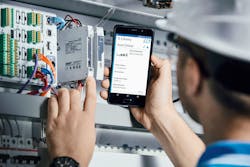During a recent Endress+Hauser digital press event, the company focused on its cloud-based Netillion industrial internet of things (IIoT) ecosystem. A key point of this press conference was to address industry’s continuing caution about moving operations data to the cloud as part of an IIoT initiative.
Endress+Hauser’s managing director Rolf Birkhofer stressed that industry’s transition to the cloud will ultimately offer users far more benefits than disadvantages. A key aspect of this assertion is that cloud ecosystems require less installation effort due to their centralized nature, Birkhofer said. Plus, these ecosystems offer users continuous real-time access and an ever-growing array of applications powered by big data.
The Netillion ecosystem
Endress+Hauser’s Netillion is a digital ecosystem that enables field instrumentation to be integrated into a cloud-based service platform to boost efficiency, ease asset management, and perform predictive maintenance. Since 2018, all Endress+Hauser field devices and sensors have been made compatible with Netillion. Birkhofer noted that the platform works with devices from other manufacturers as well, though universal compatibility cannot be guaranteed.
Direct connection of field devices to the cloud, such as with Netillion, is gaining traction as more technology suppliers offer new devices and platforms.
The broad level of connectivity fostered by Netillion requires field devices, such as sensors, to contain some level of onboard computing power to collect and transmit the continuous time-series data that feeds Netillion’s analytic capabilities.
Endress+Hauser also provides an assortment of edge devices to enable the two-channel communication that powers Netillion’s analytics. These devices include the company’s Field Xpert, Fieldgate, and Fieldedge. By allowing dedicated sensors to connect directly to the internet and send data to the cloud without first passing through the various layers of the hierarchical Purdue model, Endress+Hauser says potential latency issues caused by excessive bandwidth consumption can be avoided.
Once data is collected and processed by Netillion, users can download diagnostic information to their smartphone or tablet to monitor values, reconfigure threshold limits, or engage in predictive maintenance. An application programming interface eases the processes of integrating the Netillion database with applications from other vendors.
And while the complexity of the Netillion ecosystem may seem daunting to some, use case examples provided by Endress+Hauser help make its value proposition significantly more clear. For instance, Endress+Hauser’s Micropilot FWR30 wireless radar-level sensor can reportedly be installed inside an intermediate bulk container used for the safe transportation and storage of fluids in ten minutes or less. From there, it can continuously and instantaneously transmit level readings to the cloud for access via the Netillion application from any location.
German steel manufacturer Salzgitter Flachstahl was the first company to adopt Netillion. Its adoption of the technology featured prominently in the press conference. Salzgitter Flachstahl reports significant productivity gains since integrating its operations into the platform. At present, the company has connected all of its field devices to the cloud and is identifying the data necessary to begin engaging in predictive maintenance.
Because the data accumulated from Salzhitter Flachstahl’s operation will be used to train Netillion’s algorithms, subsequent adopters of the platform will be able to benefit from the company’s experience.
Cybersecurity concerns
To address industry’s security concerns about sending production data to the cloud, Birkhofer explained that the two-channel system used by Endress+Hauser’s edge gateways effectively address this issue. He said the gateways only “listen in” to channel the data through a firewall and proxy server, meaning that the devices themselves are not directly connected to the internet. In essence, field-to-cloud connectivity via the company’s gateways are a one-way street—data goes out, but no data can be sent back into the devices.
Birkhofer added that EuroCloud, a vendor-neutral digital competence organization, is in the process of granting Netillion an ISO/IEC 27001 information security management certification. This soon-to-be-awarded certification for Netillion requires the platform to undergo a rigorous audit, Birkhofer said.
About the Author
David Miller
Former Senior Technical Writer

Leaders relevant to this article:
